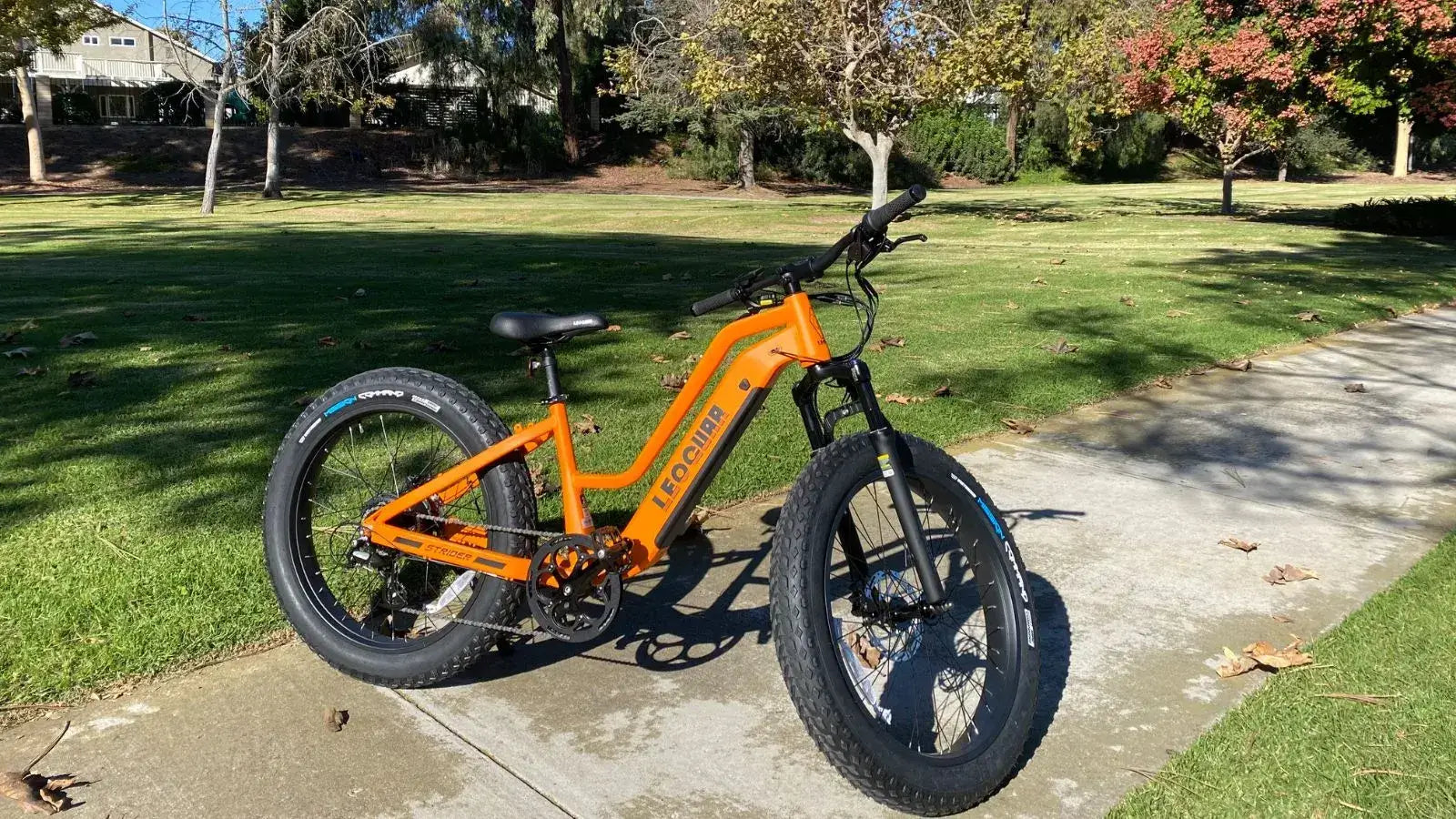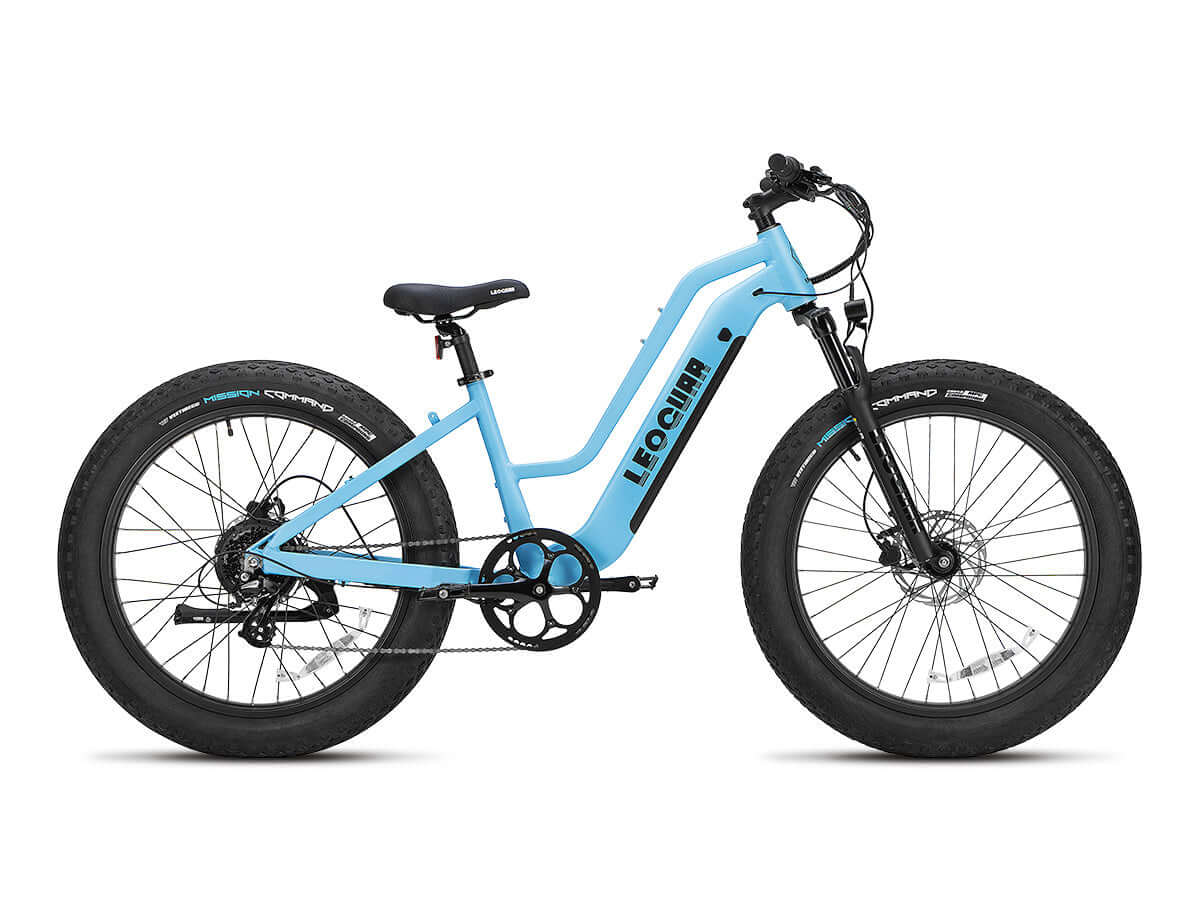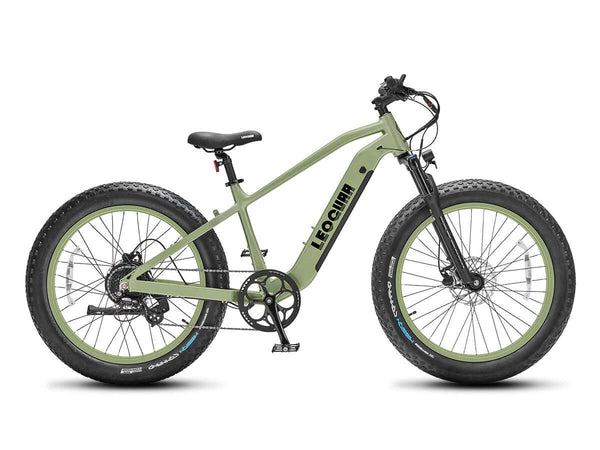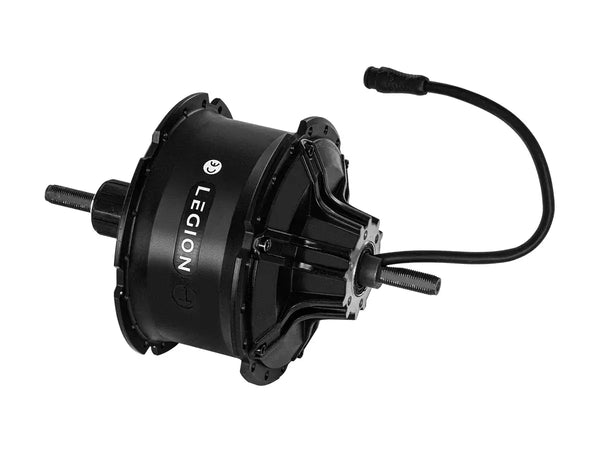
Electric Bike Motor Power: When Does an Ebike Become a Motor Vehicle?
An electric bike changes how we commute, stay fit, and have fun. But as these bikes get more powerful and faster, every rider faces an important question: When does the electric bike motor make your bicycle into a motor vehicle according to the law? This confusion makes sense, and crossing that line can lead to serious problems.
Most electric bikes that follow the rules are not considered motor vehicles. This difference isn't based on opinion - it's defined by clear legal rules about motor power and speed. In the United States, the two most important numbers are 750 watts and 20 miles per hour. If your e-bike's motor goes beyond these federal limits, you are no longer riding a bicycle. You are on an unregulated and likely illegal motor vehicle, which can result in fines, registration requirements, and licensing problems.
We understand your concern. You want to enjoy your e-bike's benefits without accidentally breaking the law. This guide will give you the clarity you need. We will explain the exact legal definitions, describe the e-bike class system, show what happens when you exceed the limits, and provide a practical checklist to keep you on the right side of the law.
The Federal Legal Line
To understand where an e-bike stands, we must first examine the basic law in the United States. In 2002, the U.S. Congress passed Public Law 107-319, which created a special category for "low-speed electric bicycles." This law separated e-bikes from motor vehicles like mopeds and motorcycles, making sure they are regulated more like traditional bicycles.
According to this federal law, for a bike to be considered a "low-speed electric bicycle" and not a motor vehicle, it must meet three specific requirements:
1. It must have fully working pedals.
2. The electric bike motor must have a power output of less than 750 watts (1 horsepower).
3. It must have a maximum motor-assisted speed of 20 miles per hour.
Bikes that meet these requirements fall under the Consumer Product Safety Commission (CPSC), just like regular bicycles. They are not considered "motor vehicles" by the National Highway Traffic Safety Administration (NHTSA), which regulates cars and motorcycles. This important difference allows you to ride a compliant e-bike without a license, registration, or mandatory insurance, according to federal and most state laws.
For readers in Europe, the standard is slightly different but follows the same principle. In the EU and UK, an e-bike (or "pedelec") is generally defined as having a motor that:
1. Provides assistance only when the rider is pedaling.
2. Has a maximum continuous rated power of 250 watts.
3. Cuts off assistance once the bike reaches 25 km/h (15.5 mph).
Here is a simple breakdown of the core differences:
| Region | Max Motor Power | Max Assisted Speed | Key Requirement | Legal Status |
|---|---|---|---|---|
| USA (Federal) | < 750W | 20 mph (motor-only) | Operable Pedals | Bicycle |
| EU/UK | ≤ 250W | 25 km/h (assist cuts off) | Pedal-Assist Only (Pedelec) | Bicycle |
These definitions form the foundation of e-bike regulation. As long as your bike's motor and performance stay within these limits, it is legally a bicycle.

Understanding E-Bike Classes
While federal law provides a baseline, most U.S. states have adopted a three-class system to create more detailed rules for where and how different types of e-bikes can be ridden. This system helps riders, land managers, and law enforcement quickly identify a bike's capabilities. Understanding your bike's class is essential for legal riding.
These e-bikes are broadly designated as Class 1, 2, or 3. All three classes are designed to fit within the federal definition of a low-speed electric bicycle, mainly by keeping the motor power at or below 750 watts.
-
Class 1: This is a pedal-assist only e-bike. The electric bike motor provides assistance only when you are pedaling, and that assistance cuts off once you reach 20 mph. Because they are lower-speed and require pedaling, Class 1 e-bikes are often allowed in the same places as traditional bicycles, including many multi-use paths and bike lanes.
-
Class 2: This e-bike has a throttle that can move the bike without any pedaling. However, the motor assistance, whether from the throttle or pedal-assist, must cut off at 20 mph. The throttle sometimes means Class 2 e-bikes face more restrictions on trails and paths than Class 1 models.
-
Class 3: This is a higher-speed pedal-assist e-bike. The motor provides assistance only when you pedal, but the assistance continues until you reach 28 mph. Class 3 e-bikes typically do not have a throttle. Due to their higher speed, they are often restricted to roadways and dedicated bike infrastructure. Many states also impose age restrictions (like 16 and older) and mandatory helmet laws for Class 3 riders.
Knowing your bike's class is not just about understanding its features - it's about knowing where you belong. A sticker on your electric bike frame usually shows its class. This information helps you read trail signs and local laws correctly, ensuring you ride legally and safely.
The Rationale Behind Rules
It's easy to see the rules as random limitations, but they exist for good reasons based on safety and infrastructure design. When we understand the "why" behind the 750-watt and speed-limit distinctions, the entire regulatory system makes more sense. The main goal is to safely integrate e-bikes into a system built for human-powered transportation.
First, the regulations protect the integrity of bicycle infrastructure. Bike lanes, greenways, and multi-use paths were designed for the speeds, weights, and stopping distances of traditional bicycles. Allowing vehicles that are much faster and heavier - essentially lightweight motorcycles - onto these paths would make them dangerous for everyone. The rules ensure that an "electric bicycle" still behaves like a bicycle.
Second is the critical issue of speed differences. Safety on any shared path or road depends on users moving at reasonably similar speeds. A pedestrian walking at 3 mph, a cyclist riding at 15 mph, and a Class 1 e-bike user cruising at 18 mph can coexist with some predictability. However, introducing a 40 mph "e-moto" into that mix creates a huge speed difference, greatly increasing the risk of high-impact collisions. Pedestrians and other cyclists have a reasonable expectation of the types of speeds they will encounter on a bike path, and the regulations exist to maintain that expectation.
Ultimately, the legal line separates vehicles that belong with bicycle traffic from those that belong with motorized traffic. Once a vehicle has a powerful enough electric bike motor to keep up with city traffic without pedaling, it fundamentally changes its nature. At that point, it may be reclassified as a motor vehicle or electric motorcycle, which rightfully brings with it the requirements of licensing, registration, and insurance. These are not just bureaucratic hurdles - they are safety mechanisms for vehicles that pose a greater risk to the public.
When an E-Bike is Illegal
This is the point where an e-bike crosses the line and becomes an unlicensed motor vehicle. This happens when a bike's specifications exceed the legal definitions set by federal and state laws. Any e-bike sold with a motor rated for more than 750 watts or one that is modified or sold to provide motor assistance above the speed limits of its class (20 mph for Class 1/2, 28 mph for Class 3) is, in the eyes of the law, not an e-bike.
These powerful machines are often called "e-motos," "hyper-bikes," or sometimes "Class 4" e-bikes. They may look like bicycles, but their performance capabilities put them squarely in the category of motor vehicles. Lawmakers are taking notice. For example, recent legislative proposals in California specifically target any vehicle with "a motor capable of exclusively propelling the vehicle in excess of 20 miles per hour" for stricter regulation.
Operating one of these on public roads, bike paths, or trails carries significant consequences. We advise every rider to be aware of these risks:
- Legal Reclassification. Your bike is no longer a bicycle. It is now considered an un-registered and un-insured motor vehicle, like a moped or motorcycle.
- Registration and Licensing. As a motor vehicle, it would legally require a license plate, registration with the DMV, and a valid driver's license with a motorcycle endorsement to operate on public roads. Riding without these is a serious offense.
- Mandatory Insurance. Motor vehicles are required to carry liability insurance. Riding without it can lead to substantial fines and personal financial exposure in an accident.
- Fines and Seizure. If you are caught riding an unregulated e-moto on a public road or, even worse, a bike path, you can face hefty fines. Law enforcement also has the authority to impound or seize the vehicle.
- Liability in an Accident. This is perhaps the biggest risk. If you are involved in an accident while riding an illegal e-moto, your bicycle or homeowner's insurance will almost certainly deny the claim. You could be held personally and financially responsible for all damages and injuries, which could be financially devastating.
The appeal of more power and speed is strong, but the legal and financial risks of crossing the line are simply not worth it.
Your Pre-Ride Legal Checklist
Staying on the right side of the law is straightforward if you are an informed consumer and a responsible rider. We've built this simple checklist to help you make smart choices before and during your ride.
When Buying an E-Bike
- Check the Specifications. Look for the motor's power rating in watts (this should be the nominal or continuous power, not the peak power) and the bike's designated class (1, 2, or 3). Any motor rated above 750W is a red flag in the US.
- Buy from Reputable Brands. Established manufacturers are invested in compliance. They clearly label their products and build them to meet CPSC and state regulations. Be cautious of obscure online sellers offering bikes with questionable claims of extreme power and speed.
- Beware of "Unlocked" Modes. Some e-bikes are marketed with an "off-road only" mode that unlocks speeds well beyond the legal limits. While intended for private property, using this mode on public roads or trails is illegal and carries all the risks mentioned previously.
When Riding Your E-Bike
- Know Your Local Laws. While the three-class system is common, rules can vary by state, county, and even city. Check your local municipality's or parks department's website for specific ordinances regarding e-bike use on trails and paths.
- Respect Trail Signage. A sign that says "No Motorized Vehicles" generally permits compliant e-bikes, as they are not legally motor vehicles. However, be on the lookout for signs that specifically restrict e-bikes or certain classes of e-bikes. When in doubt, defer to the most restrictive rule.
- Do Not Modify Your Motor. Avoid aftermarket "tuning kits" or software hacks that remove the speed limiter or increase the power output of your electric bike motor. Doing so instantly turns your legal e-bike into an illegal motor vehicle.

Ride Smart, Ride Legal
The line between an electric bicycle and a motor vehicle is clear and well-defined. In the US, it's drawn at a 750-watt electric bike motor and a top motor-assisted speed of 20 mph. In the EU, it's 250 watts and 25 km/h. Within those boundaries, the class system provides further guidance on where you can ride.
As long as your e-bike complies with these standards, it is legally a bicycle, giving you all the freedom and access that comes with it. By choosing a compliant bike from a reputable brand, understanding its class, and respecting local laws, you can confidently enjoy the powerful benefits of electric assistance. Ride responsibly, know the rules, and embrace the incredible potential of legal e-biking.
Frequently Asked Questions
1. Q: Is an electric bike a motor vehicle if it has a 1000-watt motor?
A: Yes, any e-bike with a motor exceeding 750 watts in the US is legally considered a motor vehicle, not a bicycle. This means it would require registration, licensing, and insurance to operate legally on public roads.
2. Q: Can I ride my Class 3 e-bike on bike paths?
A: It depends on local laws. Class 3 e-bikes are often restricted to roadways and dedicated bike infrastructure due to their higher speeds (up to 28 mph). Many bike paths specifically prohibit Class 3 e-bikes, so always check local signage and regulations.
3. Q: What happens if I modify my e-bike to go faster than the legal limit?
A: Modifying your e-bike to exceed speed or power limits instantly converts it from a legal bicycle to an illegal motor vehicle. This can result in fines, vehicle seizure, and liability issues if you're involved in an accident.
4. Q: Do I need insurance for my legal e-bike?
A: No, compliant e-bikes (under 750 watts and within speed limits) are legally bicycles and don't require motor vehicle insurance. However, your homeowner's or renter's insurance may provide some coverage, and specialized bicycle insurance is available.
5. Q: How can I tell if an e-bike is legal before buying it?
A: Check that the motor is rated at 750 watts or less, verify it has a class designation (1, 2, or 3), and buy from reputable manufacturers who clearly label their products for compliance. Avoid bikes with "unlocked" modes or unclear power specifications.










































Leave a comment